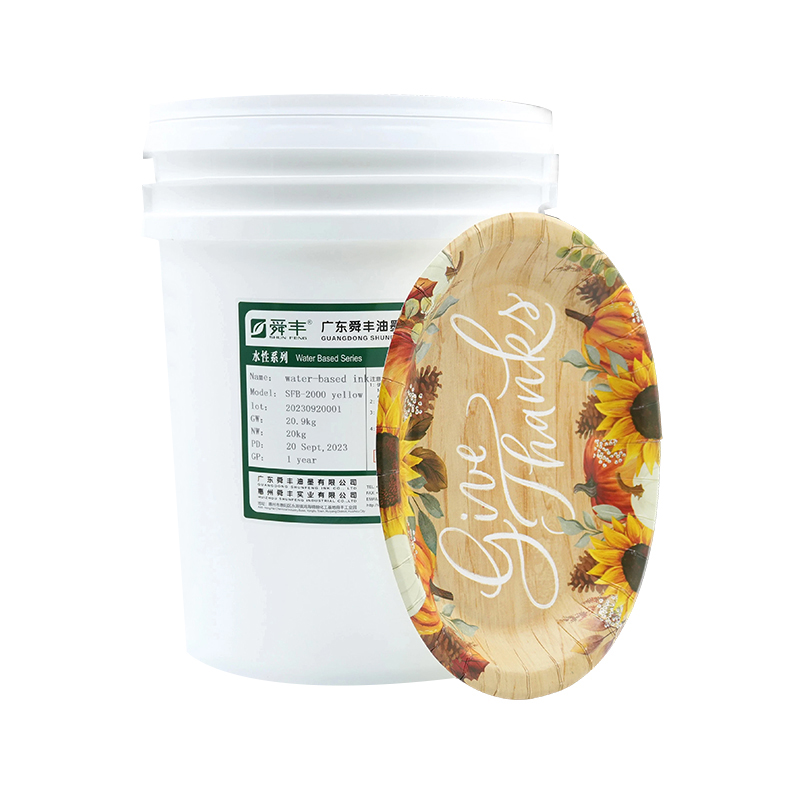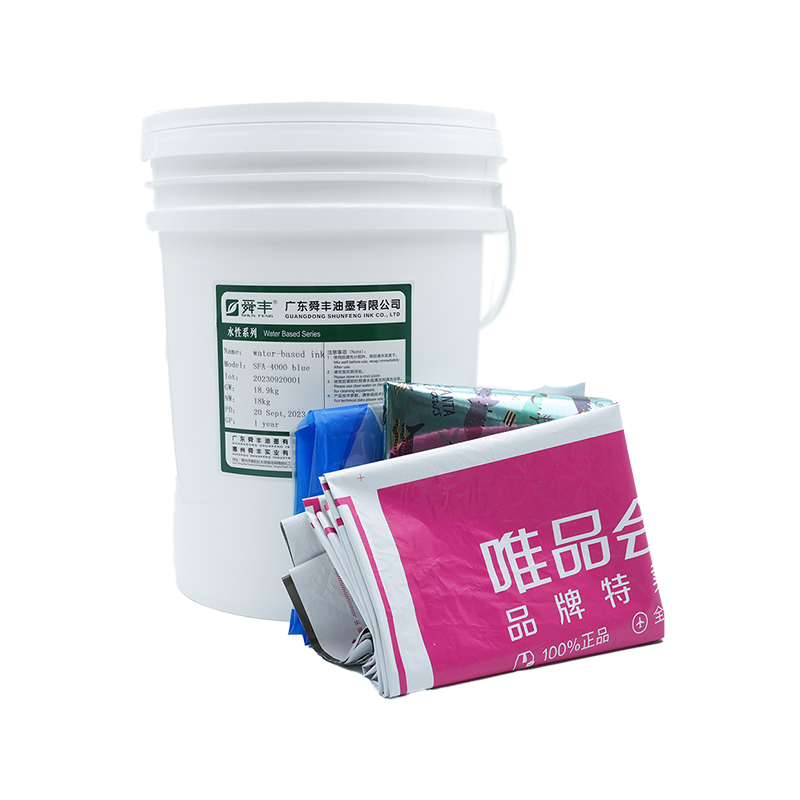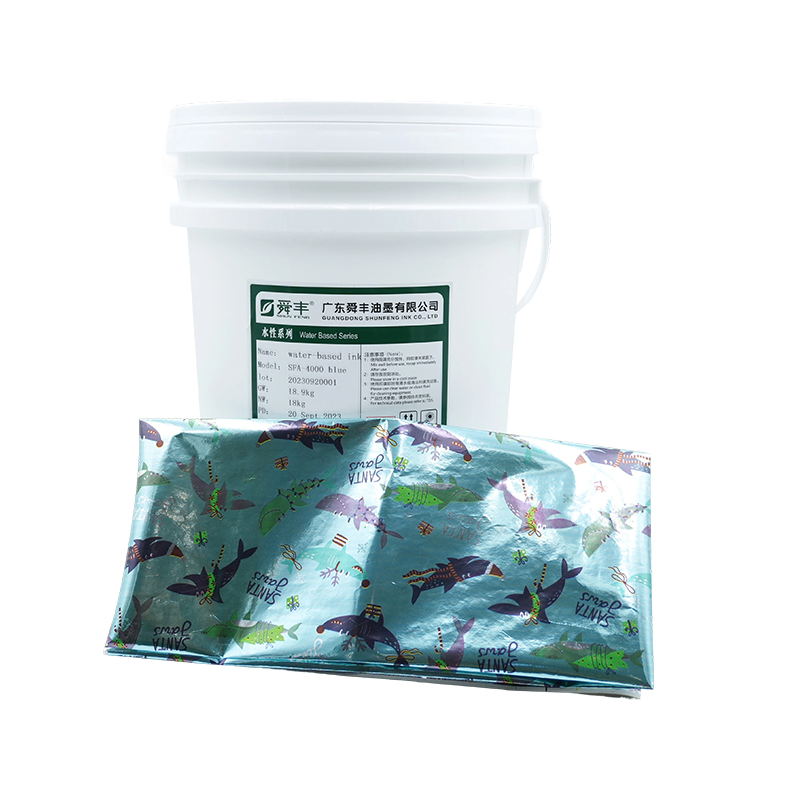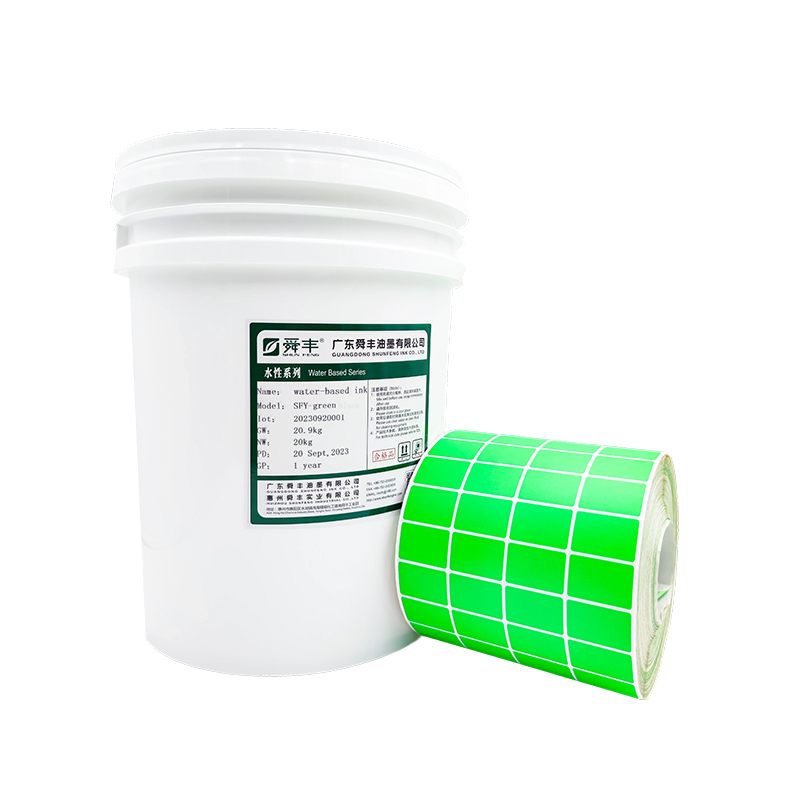What is the drying speed of gravure water-based ink and how does it affect production efficiency?
Release Time : 2025-08-13
The drying speed of gravure water-based ink and its impact on production efficiency are of great concern to the printing industry. In modern printing processes, drying speed not only directly impacts production line speed and output, but also impacts the quality and environmental performance of the final product. By optimizing the drying characteristics of gravure water-based ink, printing efficiency can be significantly improved while ensuring high product quality standards.
The drying process of gravure water-based ink primarily relies on water evaporation and resin curing. Compared to traditional solvent-based inks, water-based inks typically dry more slowly due to their higher water content. However, with technological advances, manufacturers have developed various methods to accelerate this process and minimize the impact on production efficiency.
Primarily, environmental conditions such as temperature and humidity significantly affect the drying speed of water-based inks. Higher temperatures accelerate water evaporation, while lower humidity reduces the moisture content in the air, further facilitating the drying process. Therefore, in real-world production environments, controlling temperature and humidity levels within the workshop is a crucial measure to improve drying speed. Proper temperature and humidity management not only speeds up drying time but also prevents incomplete ink drying and surface skinning caused by excessive humidity, thereby ensuring the quality of printed products.
Secondly, improvements in equipment and technology have also made it possible to accelerate the drying of gravure water-based inks. Modern printing presses are equipped with highly efficient drying systems, including hot air drying, infrared heating, and UV curing. These systems rapidly raise the ink surface temperature, promoting rapid water evaporation while accelerating the resin cross-linking reaction, resulting in rapid ink curing. Especially for high-speed printing lines, advanced drying equipment can effectively shorten waiting times between batches, significantly improving overall production efficiency. Furthermore, striking a proper balance between printing speed and drying capacity is crucial. Excessively fast printing speeds may result in incomplete drying of the ink, while too slow printing speeds can reduce production capacity.
In addition to external conditions and technical support, the ink's formulation also plays a decisive role in its drying speed. By optimizing the ink's component ratios, such as increasing the amount of volatile additives or introducing specific additives, drying performance can be significantly improved. For example, certain specially designed additives can help water escape from the ink layer more quickly without affecting other properties, thereby accelerating the drying process. Furthermore, selecting the right resin type can enhance the ink's curing properties, allowing it to achieve an ideal drying state at lower temperatures. This innovation, grounded in materials science, not only increases drying speed but also enhances ink durability and adhesion.
It is important to note that while faster drying speeds can improve production efficiency, excessive pursuit of speed can have negative consequences. For example, excessively fast drying speeds can prevent moisture from escaping quickly within the ink layer, resulting in a phenomenon known as "false drying." This phenomenon involves appearing dry on the surface, but still retaining a significant amount of moisture. This can easily lead to problems in subsequent processing, such as bubbles or poor lamination during lamination. Therefore, in practice, a balance must be struck to ensure both efficient production and consistent, reliable printed product quality.
Furthermore, the drying speed of gravure water-based inks is also affected by the printing substrate. Different types of paper, plastic film, or other materials have varying water absorption and air permeability, which directly impacts the ink's drying behavior. For highly absorbent substrates, water from the ink is more readily absorbed, accelerating the drying process. For less absorbent materials, additional drying measures are required to ensure thorough curing. Therefore, when selecting a substrate, its impact on ink drying speed should be considered, and production process parameters should be adjusted accordingly.
Finally, with growing environmental awareness, more and more companies are turning to water-based inks as an alternative to traditional solvent-based inks. While water-based inks present certain challenges in drying speed, their environmental benefits are significant. Continuous optimization of drying technology and ink formulations can not only overcome these challenges but also achieve a more efficient and environmentally friendly printing production model. In the future, with the continuous development of new materials and technologies, we believe that gravure water-based ink will demonstrate its unique advantages in even more areas, making greater contributions to promoting sustainable development across the industry.
In summary, the drying speed of gravure water-based ink is a complex and multifaceted issue, involving multiple factors such as environmental conditions, equipment configuration, ink formulation, and substrate selection. By comprehensively considering and optimizing these aspects, drying speed can be significantly improved, thereby enhancing production efficiency, ensuring print quality, and minimizing environmental impact. Whether it's a commercial printing company striving for efficient production or a socially responsible enterprise focused on environmental protection, mastering the relevant knowledge and technical means of the drying characteristics of gravure water-based ink is essential. Only in this way can they stand out in the fierce market competition and provide customers with better products and services.
The drying process of gravure water-based ink primarily relies on water evaporation and resin curing. Compared to traditional solvent-based inks, water-based inks typically dry more slowly due to their higher water content. However, with technological advances, manufacturers have developed various methods to accelerate this process and minimize the impact on production efficiency.
Primarily, environmental conditions such as temperature and humidity significantly affect the drying speed of water-based inks. Higher temperatures accelerate water evaporation, while lower humidity reduces the moisture content in the air, further facilitating the drying process. Therefore, in real-world production environments, controlling temperature and humidity levels within the workshop is a crucial measure to improve drying speed. Proper temperature and humidity management not only speeds up drying time but also prevents incomplete ink drying and surface skinning caused by excessive humidity, thereby ensuring the quality of printed products.
Secondly, improvements in equipment and technology have also made it possible to accelerate the drying of gravure water-based inks. Modern printing presses are equipped with highly efficient drying systems, including hot air drying, infrared heating, and UV curing. These systems rapidly raise the ink surface temperature, promoting rapid water evaporation while accelerating the resin cross-linking reaction, resulting in rapid ink curing. Especially for high-speed printing lines, advanced drying equipment can effectively shorten waiting times between batches, significantly improving overall production efficiency. Furthermore, striking a proper balance between printing speed and drying capacity is crucial. Excessively fast printing speeds may result in incomplete drying of the ink, while too slow printing speeds can reduce production capacity.
In addition to external conditions and technical support, the ink's formulation also plays a decisive role in its drying speed. By optimizing the ink's component ratios, such as increasing the amount of volatile additives or introducing specific additives, drying performance can be significantly improved. For example, certain specially designed additives can help water escape from the ink layer more quickly without affecting other properties, thereby accelerating the drying process. Furthermore, selecting the right resin type can enhance the ink's curing properties, allowing it to achieve an ideal drying state at lower temperatures. This innovation, grounded in materials science, not only increases drying speed but also enhances ink durability and adhesion.
It is important to note that while faster drying speeds can improve production efficiency, excessive pursuit of speed can have negative consequences. For example, excessively fast drying speeds can prevent moisture from escaping quickly within the ink layer, resulting in a phenomenon known as "false drying." This phenomenon involves appearing dry on the surface, but still retaining a significant amount of moisture. This can easily lead to problems in subsequent processing, such as bubbles or poor lamination during lamination. Therefore, in practice, a balance must be struck to ensure both efficient production and consistent, reliable printed product quality.
Furthermore, the drying speed of gravure water-based inks is also affected by the printing substrate. Different types of paper, plastic film, or other materials have varying water absorption and air permeability, which directly impacts the ink's drying behavior. For highly absorbent substrates, water from the ink is more readily absorbed, accelerating the drying process. For less absorbent materials, additional drying measures are required to ensure thorough curing. Therefore, when selecting a substrate, its impact on ink drying speed should be considered, and production process parameters should be adjusted accordingly.
Finally, with growing environmental awareness, more and more companies are turning to water-based inks as an alternative to traditional solvent-based inks. While water-based inks present certain challenges in drying speed, their environmental benefits are significant. Continuous optimization of drying technology and ink formulations can not only overcome these challenges but also achieve a more efficient and environmentally friendly printing production model. In the future, with the continuous development of new materials and technologies, we believe that gravure water-based ink will demonstrate its unique advantages in even more areas, making greater contributions to promoting sustainable development across the industry.
In summary, the drying speed of gravure water-based ink is a complex and multifaceted issue, involving multiple factors such as environmental conditions, equipment configuration, ink formulation, and substrate selection. By comprehensively considering and optimizing these aspects, drying speed can be significantly improved, thereby enhancing production efficiency, ensuring print quality, and minimizing environmental impact. Whether it's a commercial printing company striving for efficient production or a socially responsible enterprise focused on environmental protection, mastering the relevant knowledge and technical means of the drying characteristics of gravure water-based ink is essential. Only in this way can they stand out in the fierce market competition and provide customers with better products and services.







